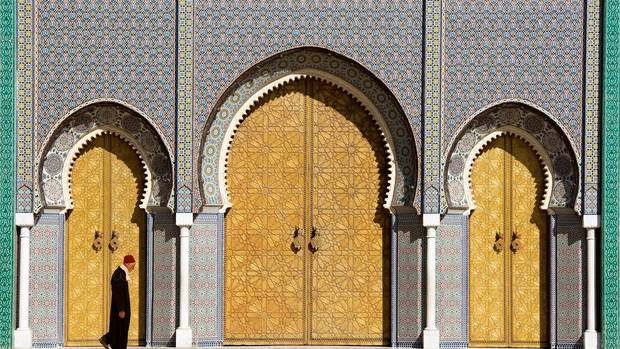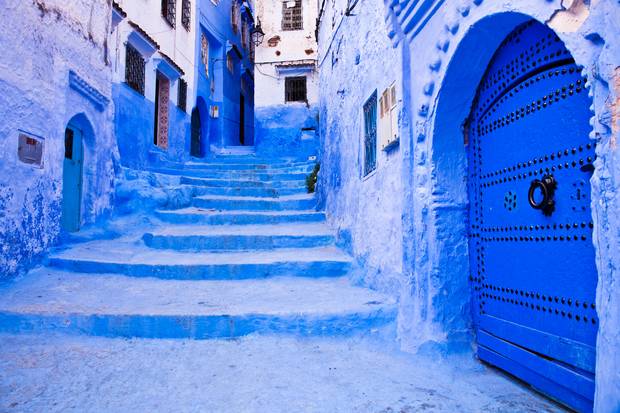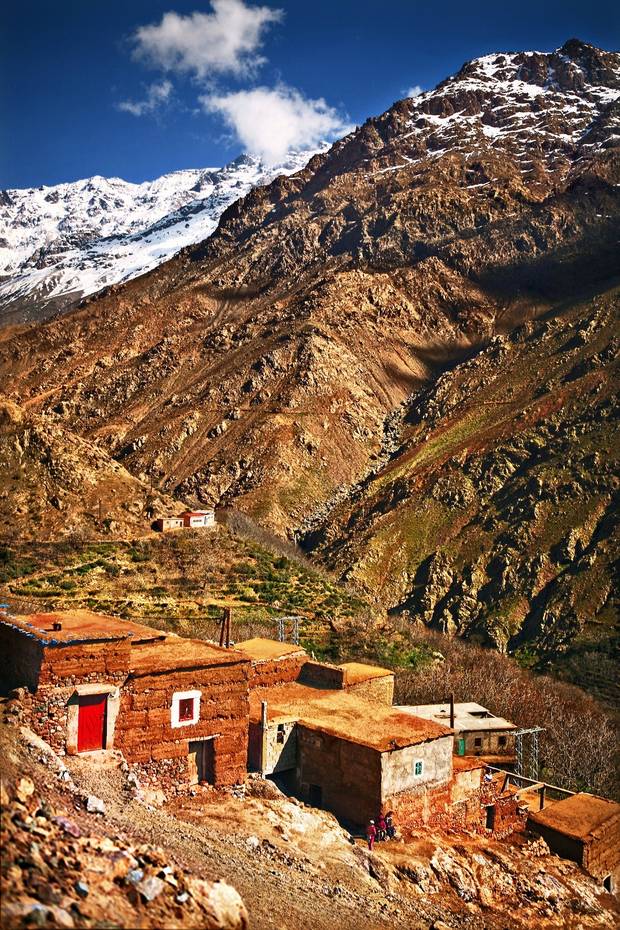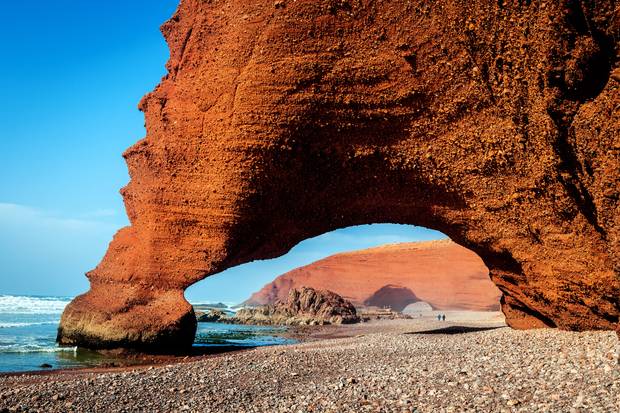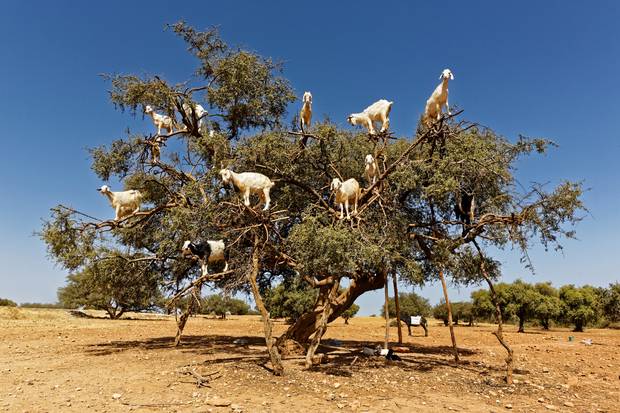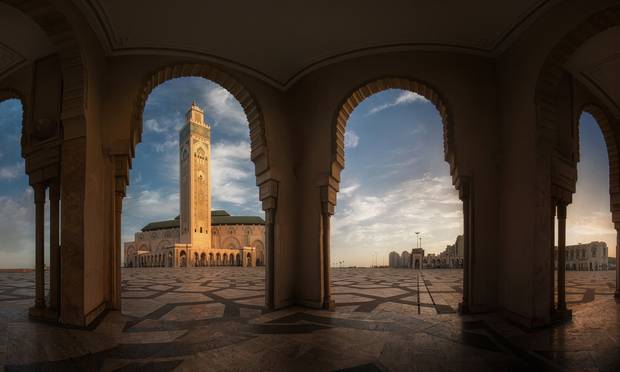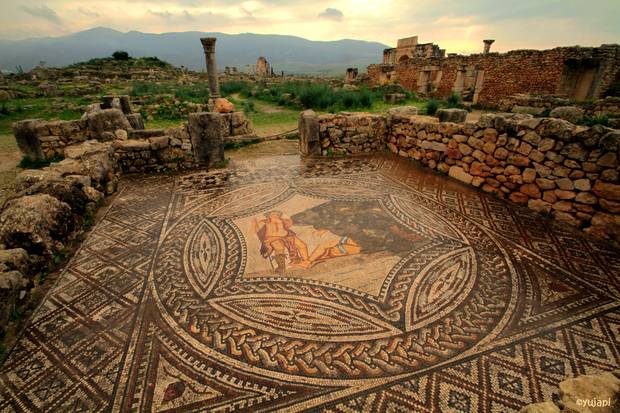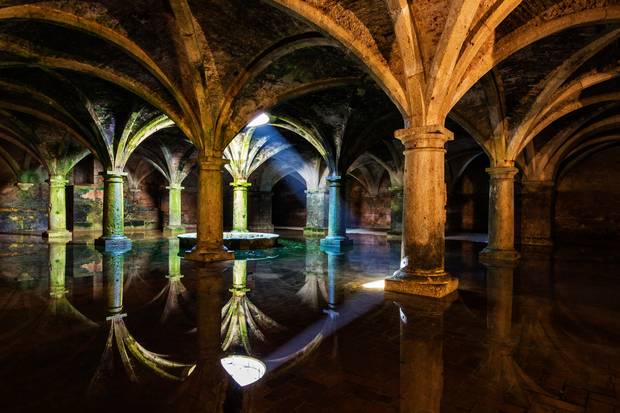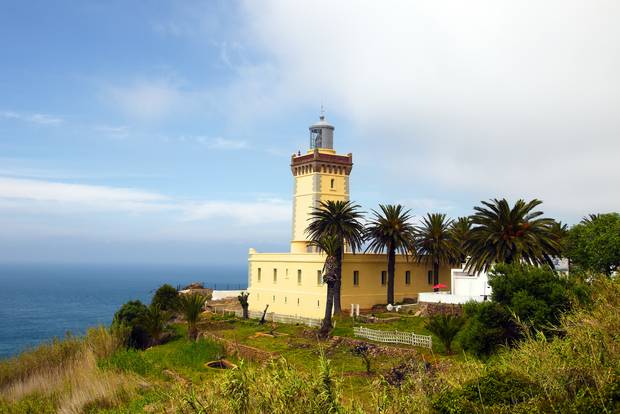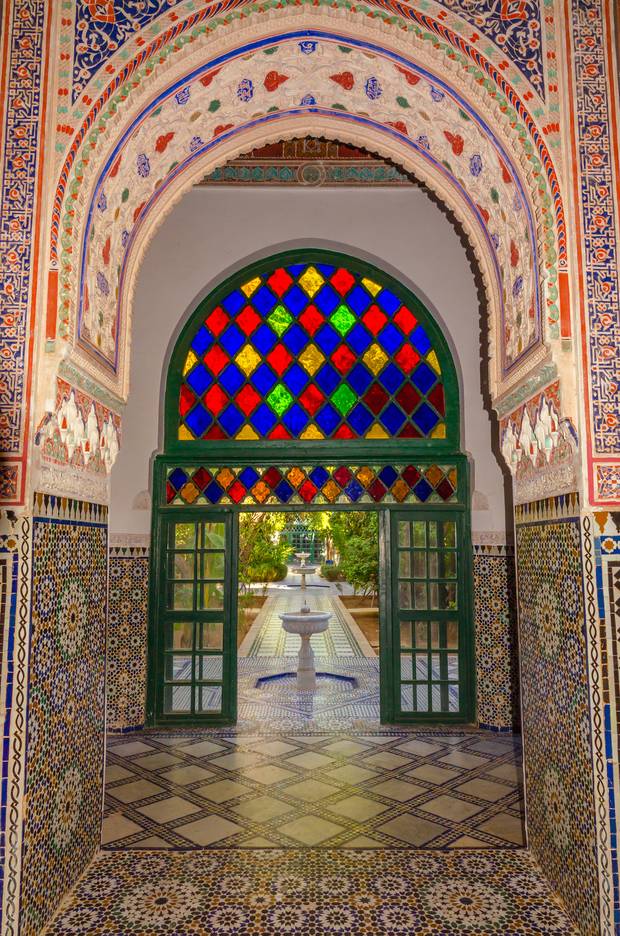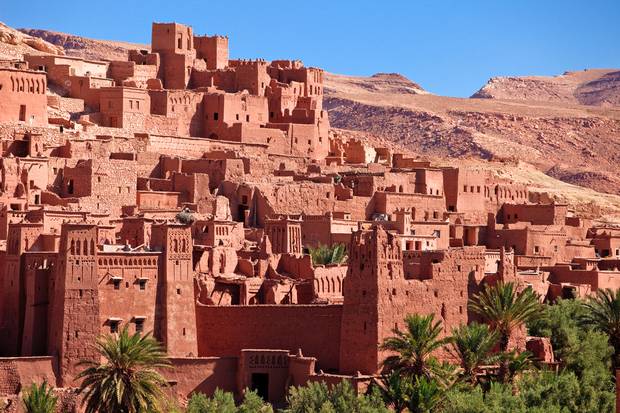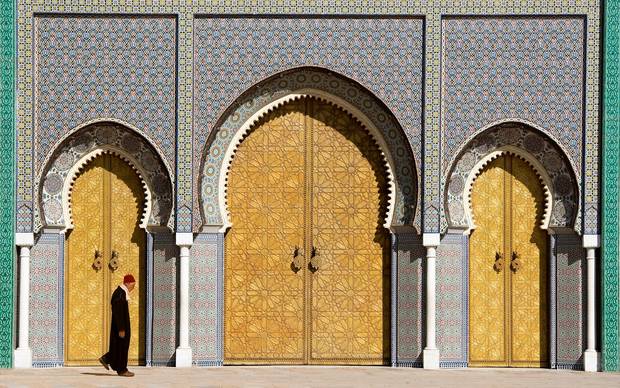NZ Herald
Alex Koch
There are few countries fit so much variety, colour and charm into their borders as Morocco.
Beloved by photographers, film scouts and tourists alike – this North African is full of amazing natural and man-made structures.
Here is a collection of twelve images that captures some of the most memorable sights and stops for those planning a trip to this photogenic Berber kingdom.
1. Chefchaouen
The blue town of Chefchaouen in Morocco. Photo / Thomas Roche, Getty Images
Morocco’s blue city in the Rif Mountains. Sat in the north west of the country it’s famous for its colourful buildings daubed in cooling hues. No one can agree why the city got its colour or weather it was to ward away the heat mosquitoes, heat or camouflage to the sky. For whatever reason it’s striking and here in Morocco.
2. Imlil Valley
Imil: On the steps of Morocco’s Atlas Mountains. Photo / Nicole Kucera, Getty Images
If you think you’ve missed Africa and arrived in the Himalayas, you’d be forgiven. This dramatic range was used as part of Brad Pitt’s 1997 film ‘Seven Years in Tibet.’
The Imlil Valley leads out of Morocco into the Atlas Mountain, Africa’s highest range of mountains. As well as stunning views up and into the valley below, the alpine climate is a few degrees cooler. This makes it a popular retreat during the hot summer months.
3. Legzira Beach
Atlantic arches: Giant red arches on Legzira beach. Photo / Getty Images
The North Atlantic has carved these fragile red cliffs into a range of impressive stone shapes.
On the 8km stretch of sand you’ll find a massive red arch. Until 2016 there were two of these formidable natural structures, when the other was undermined by the waves below and it collapsed. The expansive beach is a haven for kite surfers and para gliders.
4. Souss Valley
Morocco’s Argan tree-climbing goats. Photo / Yavuz Sariyildiz, Getty Images
How did they get up there? Of all the amazing sights in Morocco the surreal view of tree climbing goats might be one of the most arresting. The goats have learned to abandon the arid floor to forage for greenery in the Argan trees above.
They play a vital part in processing Argan oil beauty products by eating the fruit and ‘dispensing’ the nuts in dung below.
5. Hassan II Mosque, Casablanca
Morocco’s biggest mosque: Hassan II Mosque, Casablanca.Photo / Getty Images
Of all the minarets in all Morocco, you have to visit the Hassan II Mosque in Casablanca. Although not the larges religious building it does have the largest minaret – or prayer tower- ever built. It took 10,000 craftsmen seven years to erect.
Its formidable shape by the sea is recognisable for miles.
6. Volubilis
Volubilis mirabilis est: The Roman town in North Africa. Photo / Getty Images
While gone are its former glories, this North Africa hub was one of the most spectacular regional capitals in the Roman Empire. The ruins will give you at least an indication of its previous form. Amongst them entire mosaic floors can be seen with detailed patterns and classical stories depicted in tiles.
7. El Jadida
El Jadida a 16 century reservoir. Photo / Getty Images
In the port city of El Jadda, La Citerne Portugaise or ‘Portuguese Cistern’ leaves visitors with plenty to reflect upon.
This 16 century stone warehouse was converted into a reservoir for water with five beautifully proportioned columns supporting the skylights above. The effect is so mesmerising that Orson Wells chose it as a filming location for his1951 film, Othello.
8. Cap Spartel Lighthouse
The lighthouse: Cape Spartel, Tangier, which faces the straights of Gibraltar. Photo / Getty Images
The Lighthouse looks from Tangier across the straights of Hercules towards Europe. Next stop, Gibraltar. As a bottleneck for shipping in and out of the Mediterranean, the area has seen plenty of history. From Napoleonic battles to the sinking of an island city in 9000BC which – supposedly – was a founding part of the myth of Atlantis. There are some subterranean attractions still reachable to tourists, beneath the imposing lighthouse on Cap Spartel are the caves of Hercules.
9. Bahia Palace
The kaleidoscopic Bahia palace in Marrakesh. Photo / Getty Images
The very name, Bahia, means “brilliance.” The 19th century palace was modestly named by an aid to the sultan, it was intended to be the “most brilliant” court building of all time.
It’s a brief his Moroccan craftsmen have evidently stuck to in every aspect of its construction.
10. Dadès Gorges
Hairpins: Dades Gorges on the road leading into the Atlas Mountains. Photo / Getty Images
On the way up to North Africa’s Atlas mountains, take time to look back down to the valley below and marvel at this feet of civic engineering. The hairpins raise the metalled Route 704 up an incredible 500m over the precipitous Dadès River Gorge.
11. Aït Benhaddou
Aït Benhaddou: The fortified UNESCO town between the Sahara and Marrakech. Photo / Kelly Cheng, Getty Images
This Unesco heritage site is a fortified city or an “ighrem” which guards the way to the Sahara. Like a giant sandcastle its walls and corner towers are hewn out of clay and stone.
12. The Golden Gates, Fez
Golden gates: The entrance to the Royal Palace in Fez, Morocco. Photo / Getty Images
‘None shall pass’ through these Golden Gates which lead on to the Royal Palace in Fez. However to be able to just stand outside these mathematical marvels is worth the visit.
The Golden Gates are not made of gold at all, but brass which guards diligently clean with lemon juice.




